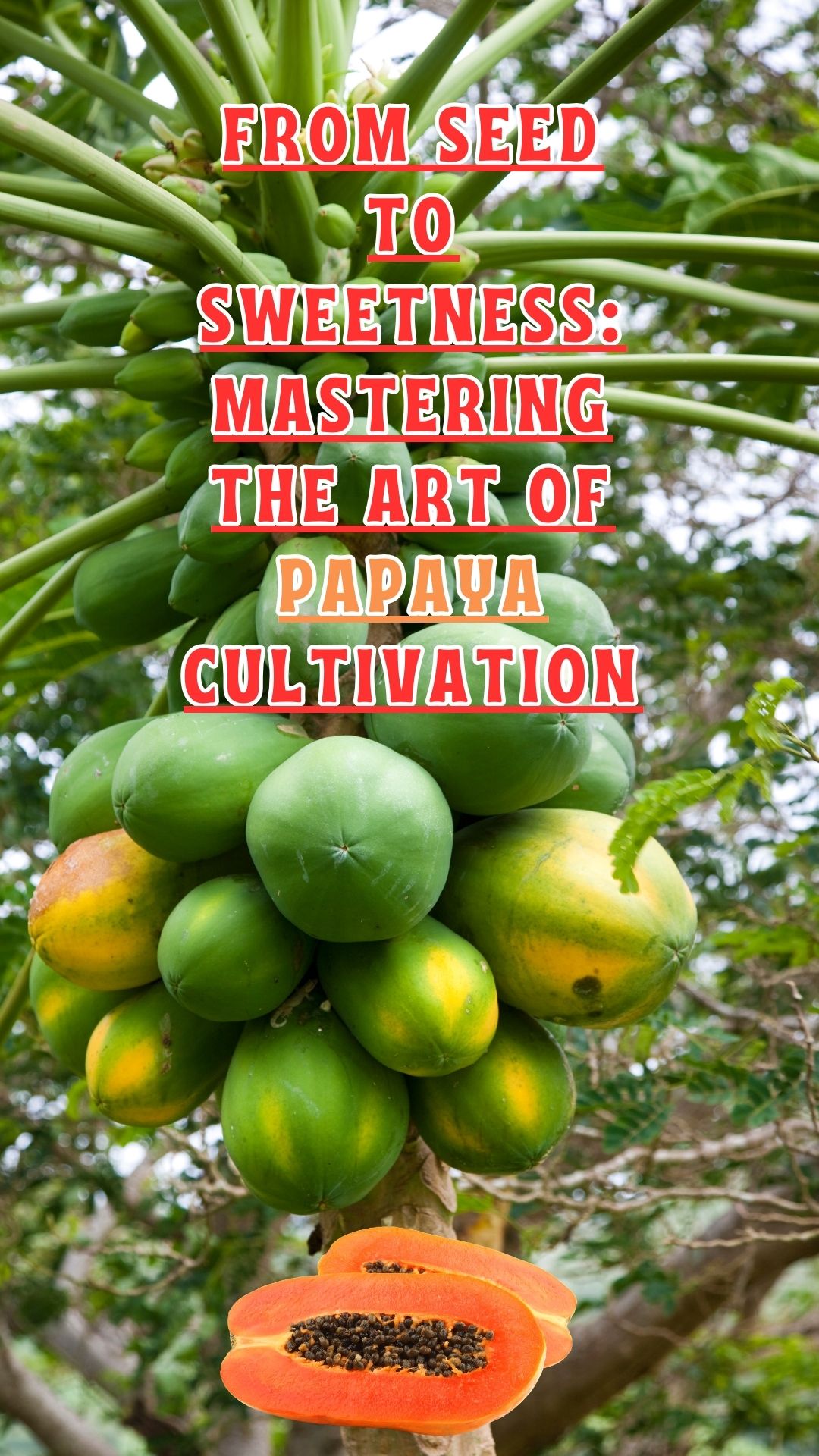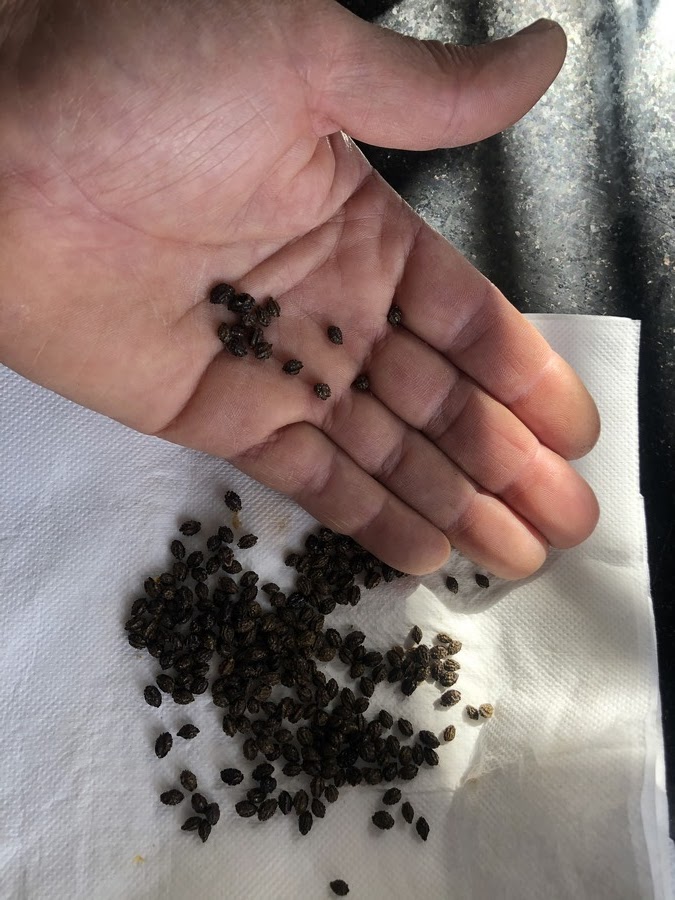Embarking on the journey of growing papayas can be an immensely rewarding experience, especially for beginners. Not only does it offer the joy of cultivating your own tropical oasis, but it also grants the satisfaction of indulging in homegrown, succulent fruits.
Climate, sunlight, water, soil quality, and knowledge of the finer points of papaya plants are all important considerations before venturing into the realm of papaya production. In this extensive guide, we'll take you through each step, ensuring a successful and fulfilling papaya-growing experience.
Step 1: Climate Check
Papayas, with their tropical origins, thrive in frost-free climates. It's crucial to assess whether your region provides the warmth and protection these plants need. Papayas are sensitive to cold temperatures, and even a brief exposure to frost can severely damage or kill them. Consult local climate data and gardening experts to determine the suitability of your area for papaya cultivation.
Step 2: Sunlight Requirements
Being sun-loving plants, papayas require a generous amount of sunlight for optimal growth. Ensure your chosen planting spot receives at least 6 to 8 hours of direct sunlight daily. In areas with scorching temperatures, a bit of afternoon shade can be beneficial. Plan your garden layout accordingly, considering the sun's trajectory and potential obstructions.
Step 3: Adequate Watering
Papayas are thirsty plants, and maintaining consistent moisture is key to their success. While they don't tolerate waterlogged conditions, they do appreciate well-draining soil that retains moisture. Establish a regular watering schedule, especially during dry spells, and use mulch to help retain soil moisture. Avoid overwatering, as papayas can suffer from root rot in soggy conditions.
Step 4: Soil Preparation
Invest time and effort in preparing nutrient-rich soil to ensure your papayas flourish. They prefer slightly acidic to neutral soil with good drainage. Compost or well-rotted manure can be incorporated into the soil to enhance fertility. Conduct a soil test to determine any deficiencies and amend accordingly. Papayas thrive in loamy soil that's well-aerated and provides a healthy environment for root development.
Now that your climate, sunlight, water, and soil conditions are all under control, it is time to start growing papayas. Papaya seeds are relatively easy to germinate.
- Simply remove the seeds.
- Wash off any leftover fruit.
- Allow the seeds to air dry for a couple of days before planting them in seed trays, containers or directly in the ground.
- Cover them with a thin layer of soil.
- Keep the soil consistently moist, until germination.
- Germination should take place in two to four weeks.
Once your papaya seedlings have developed sturdy roots and reached a suitable size, it's time to transplant them to their final growing location.
- Choose a sunny and well-drained spot, and space the seedlings adequately to allow for their eventual expansive growth.
- Water the transplants thoroughly to help them establish in their new environment.
Watch How to Plant Papaya Seedlings Video
Pruning and Care
Papayas have a rapid growth rate, and proper pruning can help control their height and promote a more robust structure. Remove any dead or damaged leaves, and trim back excess growth to encourage the development of a strong central trunk. Regularly check for pests and diseases, addressing issues promptly to maintain the health of your papaya plants.
Understanding the Papaya Plant
Originally from southern Mexico and Central America, the papaya plant is a herbaceous succulent plant that is commonly referred to as pawpaw. It is a member of the Caricaceae family. Papayas are now widely consumed in tropical and subtropical regions across the world. These fast-growing plants are known for their large, lobed leaves and a unique growth habit, with a single stem or trunk that becomes woody as the plant matures.
Papaya Fruit Description
The papaya fruit itself is a tropical delight, typically pear-shaped with a vibrant yellow or orange hue when ripe. The flesh is juicy, succulent, and has a sweet, tropical flavor. Papayas are also known for their distinctive aroma. The inner cavity of the fruit contains small, black seeds that are edible but have a peppery flavor. The fruit is rich in vitamins A and C, as well as dietary fiber.
Papaya Varieties
There are several papaya varieties, each with its own unique characteristics:
- Solo or Hawaiian Papaya (Carica papaya var. Solo): This is a smaller-sized papaya with a smooth, thin skin. It is often favored for its sweet flavor and lack of a musky aftertaste.
- Maradol Papaya (Carica papaya var. Maradol): Larger than the Solo variety, Maradol papayas have a reddish-orange skin and vibrant orange flesh. They are known for their sweet taste and are often used in salads and desserts.
- Mexican Papaya (Carica papaya var. Mexicana): This variety is commonly found in the Yucatan region of Mexico. It has a more elongated shape and a milder flavor compared to other varieties.
Papaya Diseases and Pests
Papayas are susceptible to some diseases and pests that can impact their health and yield.
- Common diseases include powdery mildew, papaya ringspot virus, and anthracnose. Regularly inspect your plants for any signs of disease, and promptly treat with organic solutions as needed.
- Pests that may affect papayas include aphids, mites, and fruit flies. Implementing natural predators, like ladybugs, and practicing good garden hygiene can help manage pest populations without resorting to chemical solutions.
Harvesting Papaya Fruits
Growing papayas is an exercise in patience, but the reward is well worth it. With the right care, your papaya plants will grow tall and produce an abundance of fruits within a few years. Harvest ripe papayas when the skin yields to gentle pressure, and the fruit takes on a vibrant color. Enjoy the sweet taste of success as you savor the fruits of your labor.
Watch Harvesting Papayas: Savor the Sweetness of Success 🌞🌿
Cultivating papayas from seed is not just a gardening endeavor; it's a journey into the heart of tropical horticulture. By understanding and addressing the specific needs of these remarkable plants, you can create a thriving papaya garden that provides not only delicious fruits but also a lush and green addition to your landscape. Follow this comprehensive guide, stay attentive to your plants' needs, and relish in the joy of cultivating your very own papaya paradise. Happy gardening! 🌱🌴
Want to read:
Want to grow papaya!
This website is a participant in the Amazon Services LLC Associates Program, an affiliate advertising program designed to provide a means for sites to earn advertising fees by advertising and linking to Amazon. Some of the links to products on this site are affiliate links. These are products that I've used or recommend based from homesteading experience. I do make a small commission (at no extra cost to you) from these sales.(alert-warning)















